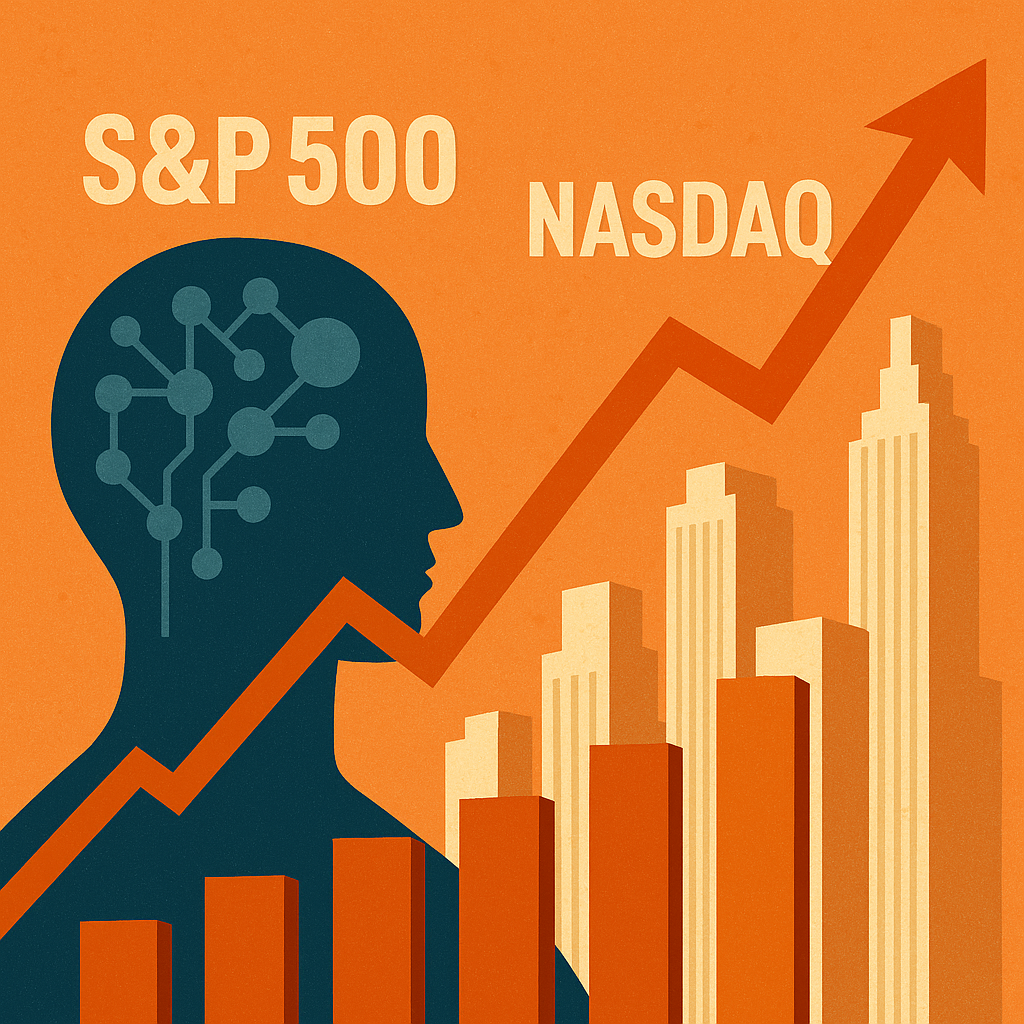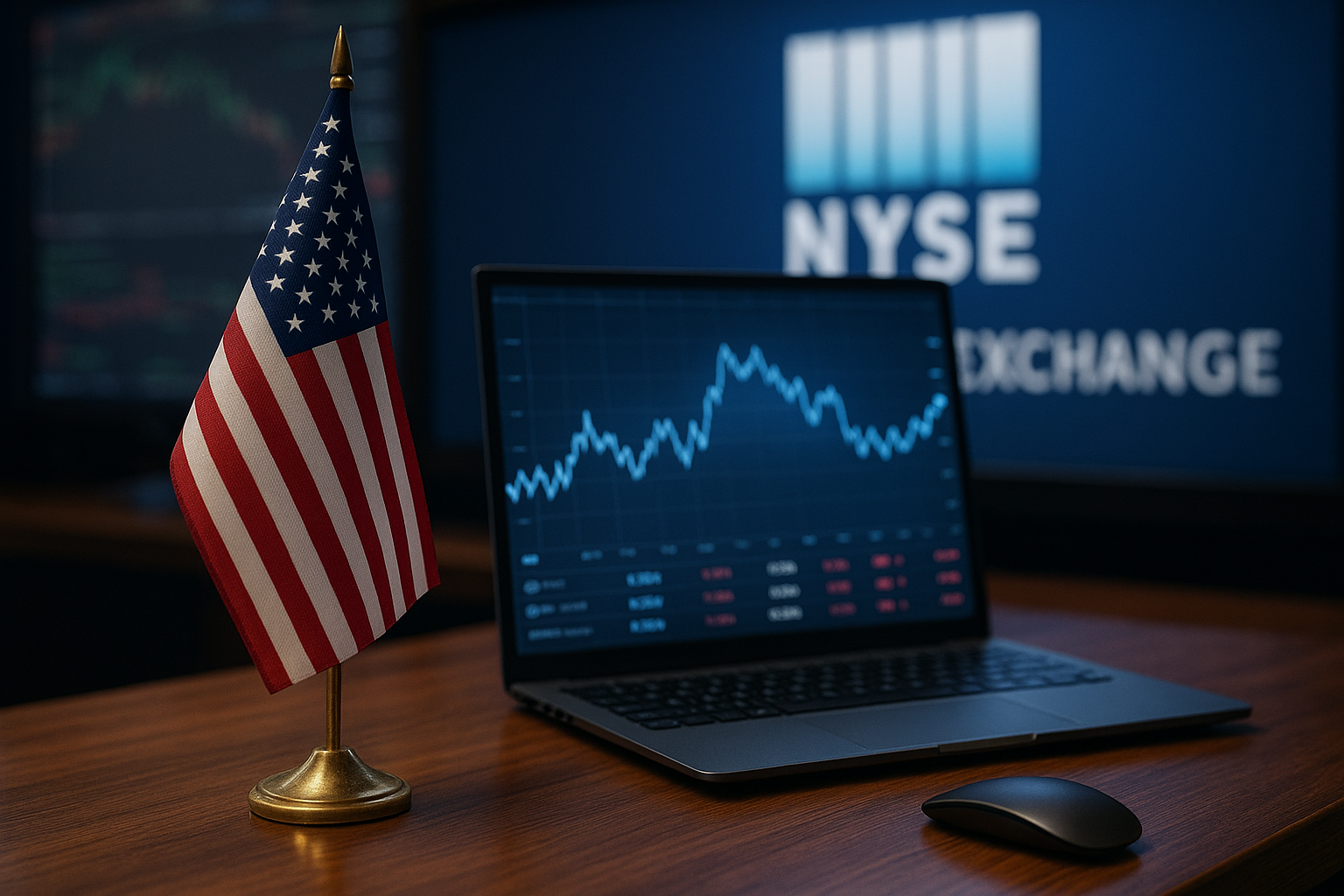On July 25, U.S. equity markets soared to fresh highs as megacap tech and artificial intelligence (AI) leaders continued their historic run. The S&P 500 and Nasdaq Composite both notched new closing records, propelled by strong earnings from Alphabet ($GOOGL) and broad enthusiasm around AI-powered innovation.
But beneath the surface, market breadth told a different story: Tesla ($TSLA) tumbled after a disappointing quarter, and global equities slipped, highlighting persistent investor caution about concentration risk and the sustainability of tech-led gains.
AI Mega Caps Are Doing the Heavy Lifting
Alphabet’s better-than-expected Q2 earnings, bolstered by robust advertising growth and advancements in AI capabilities, gave markets a jolt of optimism. The company’s cloud revenue grew 28% YoY, while CEO Sundar Pichai emphasized the “inflection point in AI monetization.” Alphabet’s stock closed nearly 6% higher, contributing significantly to the Nasdaq’s surge.
Joining Alphabet in the rally were familiar AI bellwethers:
- Nvidia ($NVDA) gained 3.2% as investors bet on continued data center demand.
- Microsoft ($MSFT) rose 1.4%, buoyed by continued Azure AI traction.
- Meta Platforms ($META) advanced on expectations of AI-integrated ad products.
Even as investors digest macroeconomic uncertainty, these stocks are seen as the engines of innovation and productivity gains, helping to justify elevated valuations.
“AI is not a sideshow—it’s becoming the core growth narrative for tech and the broader market,” said Lori Calvasina, Head of U.S. Equity Strategy at RBC Capital Markets, in comments to CNBC.
But the Rally Isn’t Broad-Based
While the headline indexes are reaching new milestones, a closer look reveals narrowing leadership. The Russell 2000, a benchmark for small-cap stocks, remains flat, and sectors like energy, utilities, and real estate have underperformed. Tesla’s 12% drop—triggered by falling margins and vague AI timelines—offered a reality check, underscoring that AI exposure alone isn’t enough to shield against earnings weakness.
The divergence is also evident in global markets. The MSCI All-Country World Index slipped on the same day, weighed down by weak data out of Europe and persistent deflation fears in China. This highlights that the current U.S. rally is being powered by a concentrated group of stocks, not broad economic momentum.
This raises concerns about market fragility. According to Bank of America, the top seven megacaps now make up over 30% of the S&P 500’s total market cap, a level not seen since the dot-com era.
Why This Matters for Investors
The AI revolution is undeniably reshaping market expectations, but such concentration in leadership carries risk. If even one of the megacap leaders stumbles—or if regulatory scrutiny intensifies—it could ripple across the entire index.
“Tech is doing the heavy lifting,” said Edward Moya, senior analyst at OANDA, “but it’s dangerous to ignore how disconnected the rest of the market has become.”
Valuations are also beginning to look stretched. The S&P 500 is trading at 21x forward earnings, well above historical averages. For AI-heavy names like Nvidia, the multiple exceeds 40x, pricing in continued hypergrowth that may prove difficult to sustain if macro headwinds grow stronger.
Future Trends to Watch
- Earnings Momentum: Upcoming reports from Amazon ($AMZN) and Apple ($AAPL) will test the staying power of the AI-led rally.
- Federal Reserve Outlook: With inflation cooling, the Fed may hold rates steady—but any hawkish surprise could derail sentiment.
- Geopolitical Risks: Trade tensions and the U.S. election cycle could introduce volatility, especially for tech giants with global exposure.
- Sector Rotation: If economic data strengthens, underperforming sectors like industrials or financials could attract rotation flows.
Key Investment Insight
While staying invested in AI and megacap tech continues to pay off, investors should diversify exposure and monitor concentration risk closely. Consider hedging strategies or selective rotation into undervalued sectors that may benefit from macro stability or policy shifts.
Don’t chase the hype blindly—track fundamentals, earnings, and risk-adjusted return potential.
Looking to stay ahead of the next market move?
Follow MoneyNews.Today for daily, data-driven insights on what really moves markets.





